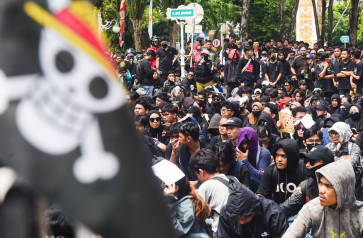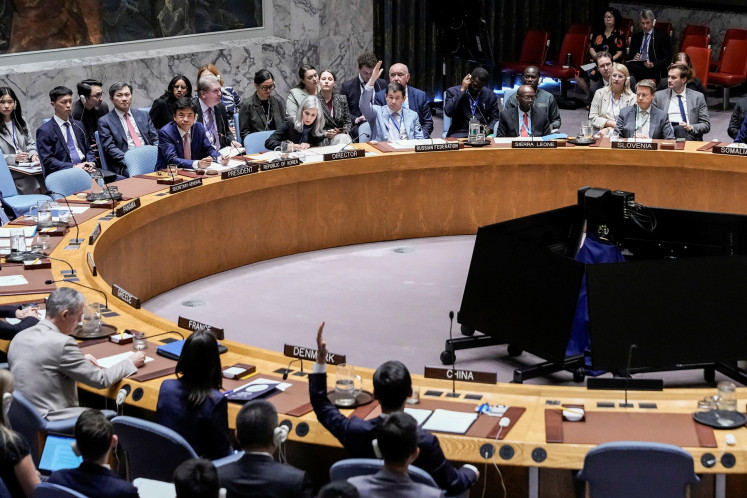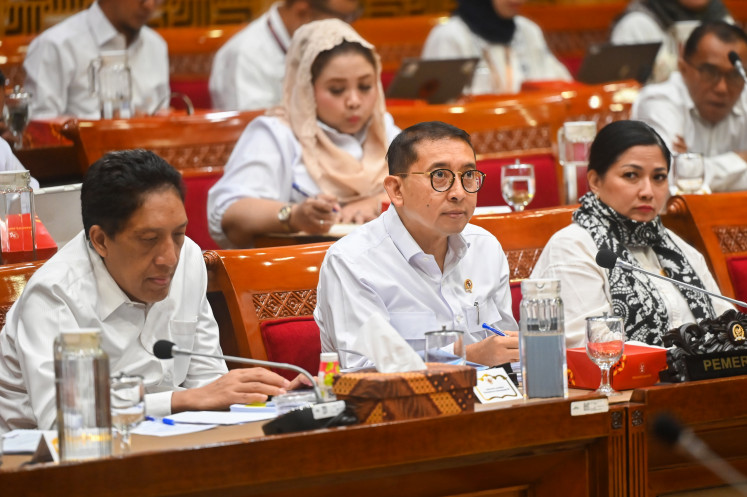Popular Reads
Top Results
Can't find what you're looking for?
View all search resultsPopular Reads
Top Results
Can't find what you're looking for?
View all search resultsMeltdowns inevitable, the sordid side of nuclear power
Once again, we are reminded of the inherent risks of nuclear power, which will always be vulnerable to the potentially deadly combination of human error, design failure and natural disaster
Change text size
Gift Premium Articles
to Anyone
O
nce again, we are reminded of the inherent risks of nuclear power, which will always be vulnerable to the potentially deadly combination of human error, design failure and natural disaster.
Chernobyl was the world’s worst civilian nuclear accident to date. But what is unfolding in the aftermath of the worst ever earthquake in Japan, at more than two nuclear facilities (at the time of writing), will remain unprecedented in the history of nuclear accidents.
Yet, it is by no means the only one: The history of nuclear energy is a history of accidents, right up to today — from partial meltdowns to radioactive leaks to internal system failures. Records show that these accidents are not confined to a particular time, country or reactor type.
Since Chernobyl, nearly 800 significant leaks accidents have been officially reported to the International Atomic Energy Agency. The agency developed a rating to classify the problems called INES system.
It classifies and distinguishes them on the scale from 0 to 7 on the basis of what impact they have on people and the environment as well as which safety or security systems were breached.
While the Chernobyl catastrophe remains the only accident of the highest 7th level as of today, there have been a number of accidents and incidents officially reported:
4 at level 4 occurred in Japan, India, Belgium and Egypt, 31 at level 3, of which 12 occurred at nuclear reactors, in 19 countries including Sweden, US, Russia, China, Spain, France and UK, 254 at level 2, of that 132 at nuclear reactors in 34 countries
Nuclear reactors may have undergone modernisation since the Chernobyl, but the root causes of the technology’s vulnerability to accidents remain the same: Unexpected technological failures, operator error, lack of transparency in the industry as a whole, economic or political pressures, and potential terrorist attacks.
And most importantly the obvious — Earthquakes, Tsunamis and extreme weather events like hurricanes that cannot be predicted but have certainly become more recurrent than ever.
‘
The new generation of nuclear reactors presents safety hazards because of higher levels of radioactivity.
”
Japan requires that the nuclear power plants are designed and built to be able to cope with certain levels of earthquakes. This means that the buildings, equipment and machinery should not be damaged up to the level of so called “extreme design earthquake”.
However, the standards used for designing reactors in the past decades do not necessarily correspond to the potential strength of an earthquake. For example, in July 2007 an earthquake of 6.7 magnitude hit the Kaswhiwazaki-Kariwa power plant, causing movements 2.5 times stronger than the maximum design earthquake of its reactors.
It is believed that this earthquake was caused by the movement of an approximately 30 kilometers long and 25 km deep fault. This fault was not taken into account during surveys carried out for the design of the Kashiwazaki-Kariwa nuclear power plant. From analysis of the distribution of the after shocks from the 16 July 2007 quake, it is now believed that there is an active fault extending directly under the Kashiwazaki-Kariwa NPP.
The Kashiwazaki-Kariwa reactors have been shut down for several years, but four of them have been put back in service since, amid of controversy and protests by local citizens.
Because many of the reactors — including those in Fukushima — were built in 1970s and 1980s, the gap between their design and the scale of possible earthquake could be even bigger than in Kashiwazaki-Kariwa in 2007. Should a really strong earthquake occur, their technology cannot guarantee safety.
Apart from the robustness of the reactors itself, there are other factors that make them extremely vulnerable during natural disasters. One of the weakest points is a loss of electricity supply, leading to sudden failure of cooling and reactor control systems. This seems to have been the case in Fukushima, possibly caused by the flooding of the plant. But there were also other examples of near accidents from this cause (most serious one happening recently at Forsmark in Sweden, 2006).
Apart from design and construction problems, the new generation of nuclear reactors presents safety hazards because of higher levels of radioactivity that could be released in case of a major accident, due to their unprecedented size and the usage of high burn up nuclear fuel, both of which are driven by the desire to improve the reactors’ economics.
For a light-water reactor (Fukushima’s reactors are of the type Boiling Water Reactors), simulations have shown that the plume of radioactive materials in the air will go up at about 100 meter, depending on atmospheric conditions, but remain lower in the atmosphere than the Chernobyl accident of 1986, where radioactivity continues to cause long-lasting high levels of contamination over a distances of up to several hundreds of kilometers.
This means that the dilution of radioactivity will be generally lower and that contamination on the ground and in the air at ground level will be higher. If the wind direction pushes the radioactive materials towards highly populated areas, the consequences of such disaster could even be worse than the Chernobyl accident.
However, in more favorable circumstances, the wind could blow a large amount of the radioactivity towards the sea. Compared to Chernobyl, where radioactivity was released over a timeframe of at least 10 days, the main release are expected to be over a much shorter period.
If radioactivity is released in a shorter timeframe, the pattern of the release will be less diverse and more concentrated. Thus for both reasons, concentration of contamination is expected to be higher than for Chernobyl, but spread over a smaller area.
Although this is an unfolding situation, with conflicting reports from government agencies and the operating company TEPCO on the unfolding scenarios. One thing is clear, the present catastrophe would have allegedly almost been prevented. According to a database of the Research centre “Nuclear Training Centre” (ICJT) in Slovenia the “expected date of closure”
The Unit 1 of Fukushima-Daiichi pile was March 2011 after about 40 years.
The writer is the campaign director for Greenpeace Southeast Asia










